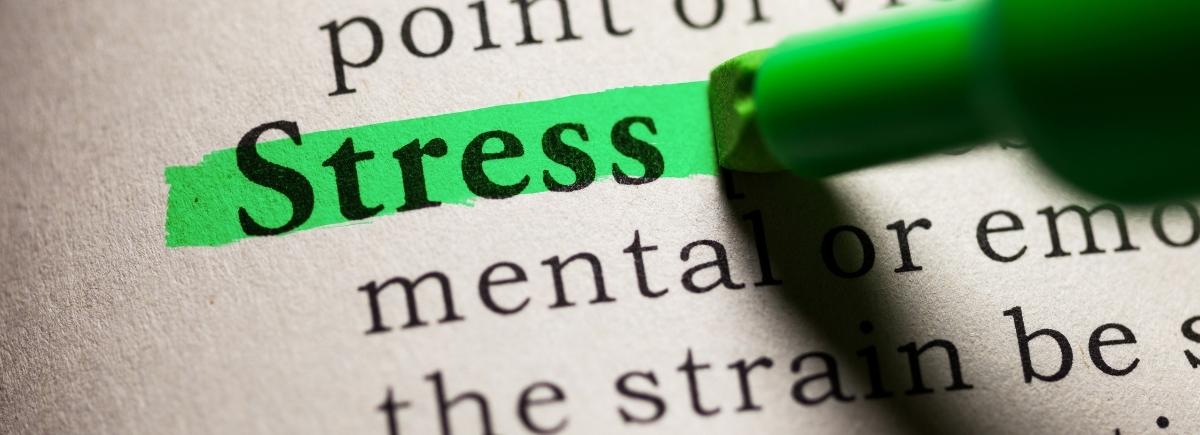Psychophysiology
Hey! Wait! I know…the title of this article is a bit intimidating. Psychophysi-what? Trust us, we know that it is a mouthful, but it sets the stage for basically everything we do at Hanu Health. No, really, it is the scientific foundation upon which this entire health technology platform is built. The goal of this article is to do two things. First, explain the field of psychophysiology …in very easy-to-understand terms. Second, to explain how you can use this information, both with your Hanu and without it. See, we are not just trying to sell you on our platform (even though we believe we do it best, if we may say so ourselves).
Put simply, psychophysiology is the study (-ology) of the interrelationship between the psychological (psycho-) and physiological (-phyisio) process. We love the definition from Adreassi (2007), “Psychophysiology is the study of relations between psychological manipulations and resulting physiological responses, measured in the living organisms, to promote understanding of the relation between mental and bodily processes” (p. 2). The relationship between psychological and physiological processes is a two-way street (bidirectional) and is quite dynamic in nature. Dynamic here means changing and time-varying. With every change in one process, there is change in another. Let’s break this down.

The Body’s Desire for Consistency and Stability
We actually know that every single change that occurs in our physiological state will be followed or accompanied by a change in our mental or emotional state. These phenomena will occur either by our own conscious awareness or, and mostly, happen unconsciously. The inverse of this is also true. Again, this relationship is bidirectional and dynamic in nature. One thing we know for certain, the body (physiology) and the mind (psychology) are always striving for balance (in loose terms, not technical terms). In scientific terms, we refer to this as homeostasis. Homeostasis is the body’s means for maintaining a stable internal environment. Homeostasis keeps us stable, both mind and body. Sounds good, right? We have this internal mechanism for maintaining a level of balance. Yep. We do. But, what happens when we experience stressors? Or, better, yet, what if we are living the life of a “normal person” and experience stressor, after stressor, after stressor, after….you get my point.

Well the answer to that is quite simple (but also insanely complex). Let me give you an example and then explain. When you work out, you are stressing the body. Let’s say you are lifting weights. The idea here is to create micro-tears in the muscle fiber. Through reparation and adaptation, these muscles build back stronger and larger. Everyone knows that Monday is National Chest Day (all of the gym rats will understand that one). But, what if you make every day your chest training day? If the chest muscles are always being stressed without time to repair…well, then…you do not grow and can cause significant damage, limiting your ability to perform. What’s the gist here? Stressors are great, but only to the extent that we either build resiliency to them or allow time for repair. Fortitude and resiliency are a lot more difficult under constant tension. But, if we are able to maintain stability throughout small or large change, this is referred to as allostasis and is a complement to homeostasis. Allostasis allows us to shift and adapt to our environment through behavior. This is especially helpful when we are anticipating challenges and build resiliency and fortitude in preparation. Here, the perception of our resources to handle stress outweighs the experience (or anticipation) of the stressor. But, what if the anticipation of the stressor or the stressor itself start to outweigh our perceived resources and capability to handle it?
Experience of Stress > Our Perceived Resources
Experiencing daily life stressors is similar to engaging in a workout. If we live through them (or with them) and have a resilient nervous system and cognitive fortitude, then we are able to sustain small blasts of stress throughout the day. On the contrary, if we lack stress resiliency and mental fortitude and we experience stress all day, every day, we are bound to shift many psychological and physiological processes–and, not in a good way. This overload of stress that is so taxing that our current resource set cannot manage is referred to as allostatic load. Allostatic load is in stark contrast to homeostasis, in that it occurs when overly frequent taxation of the nervous system has resulted in a system (both mind and body) that does not flourish. How do you know if you are experiencing allostatic load?

Return to Your Baseline:
Ok, so this is great information, but let’s get down to brass tax. What can you do about allostatic load? Here at Hanu, we continue to beat on two drums:
- Self-awareness
- Self-regulation
You have to first recognize that your body has left a state of homeostasis and allostasis and has entered a state of allostatic load. Remember, this is when your experience of stress is outweighing your perceived resources, leading to an overly taxed nervous system. Look for the signs. We are great at convincing ourselves we are okay. Sometimes, it is helpful to hear from objective bystanders. This could be a family member, church member, co-worker, etc. They may be a reliable source of information that can “tell you like it is.”
Another way to measure taxation of the nervous system is through tracking changes in heart rate variability (HRV). Yep, that’s us here at Hanu! Indeed, we are the specialists in HRV and HRV biofeedback. We can help provide you will accurate information about subtle or large scale changes in your nervous system, reflective of allostatic load. By tracking changes in the different metrics of HRV, you can become more aware of when your body is becoming overly taxed by stress.
Lastly, after the recognition that you are experiencing allostatic load, it is time to self-regulate. This is where you can use Hanu’s training like Resonance Frequency Training, a tailored approach proven to help enhance stress resiliency. You can also employ the use of breathwork (try Hanu’s Oxygen Advantage trainings and assessments), meditation, or even engage in physical activity/movement. Here at Hanu we have created an entire stress resiliency interface that is here to make you a rockstar at living with stress. Ready to give us a try?



